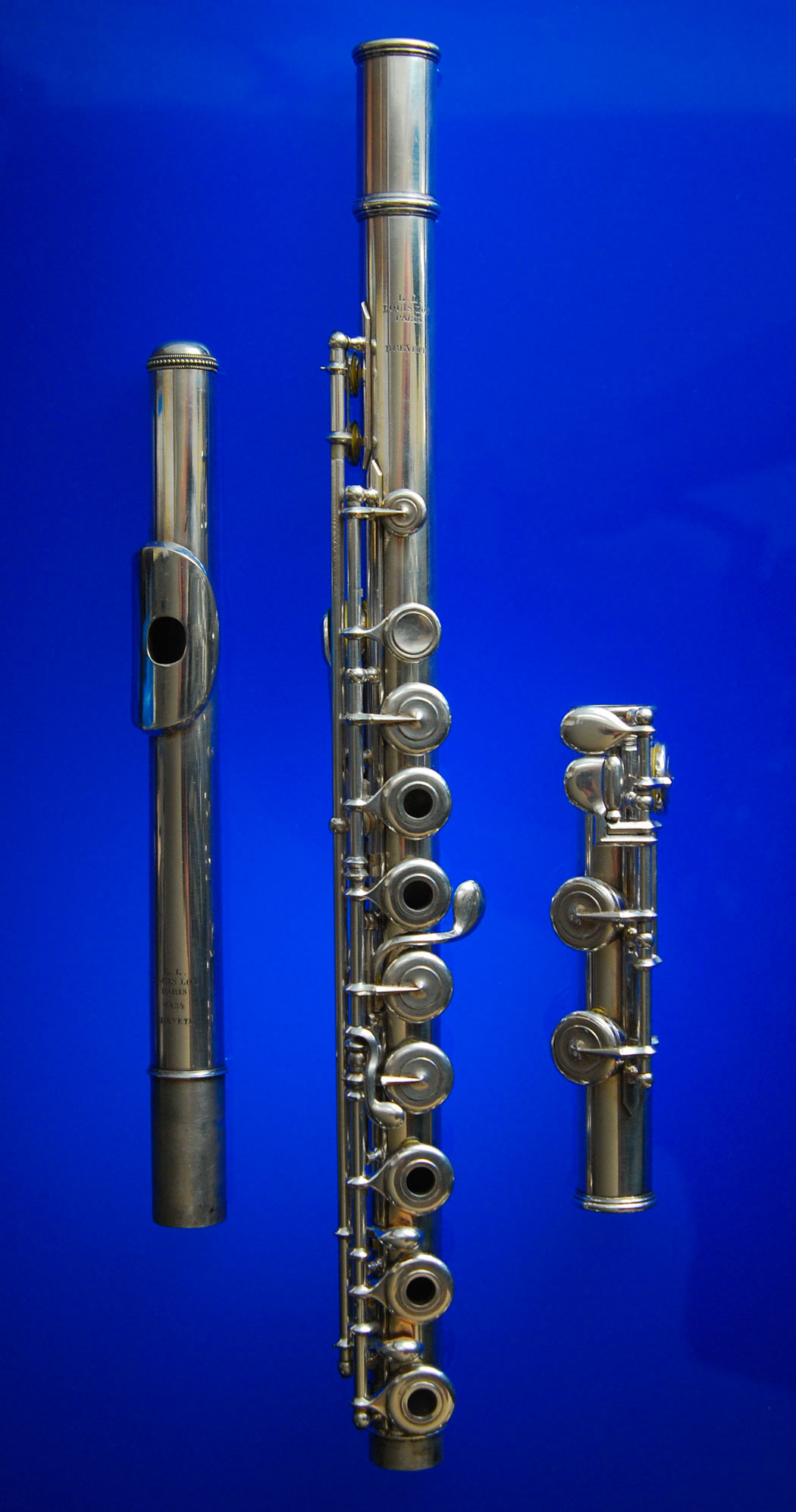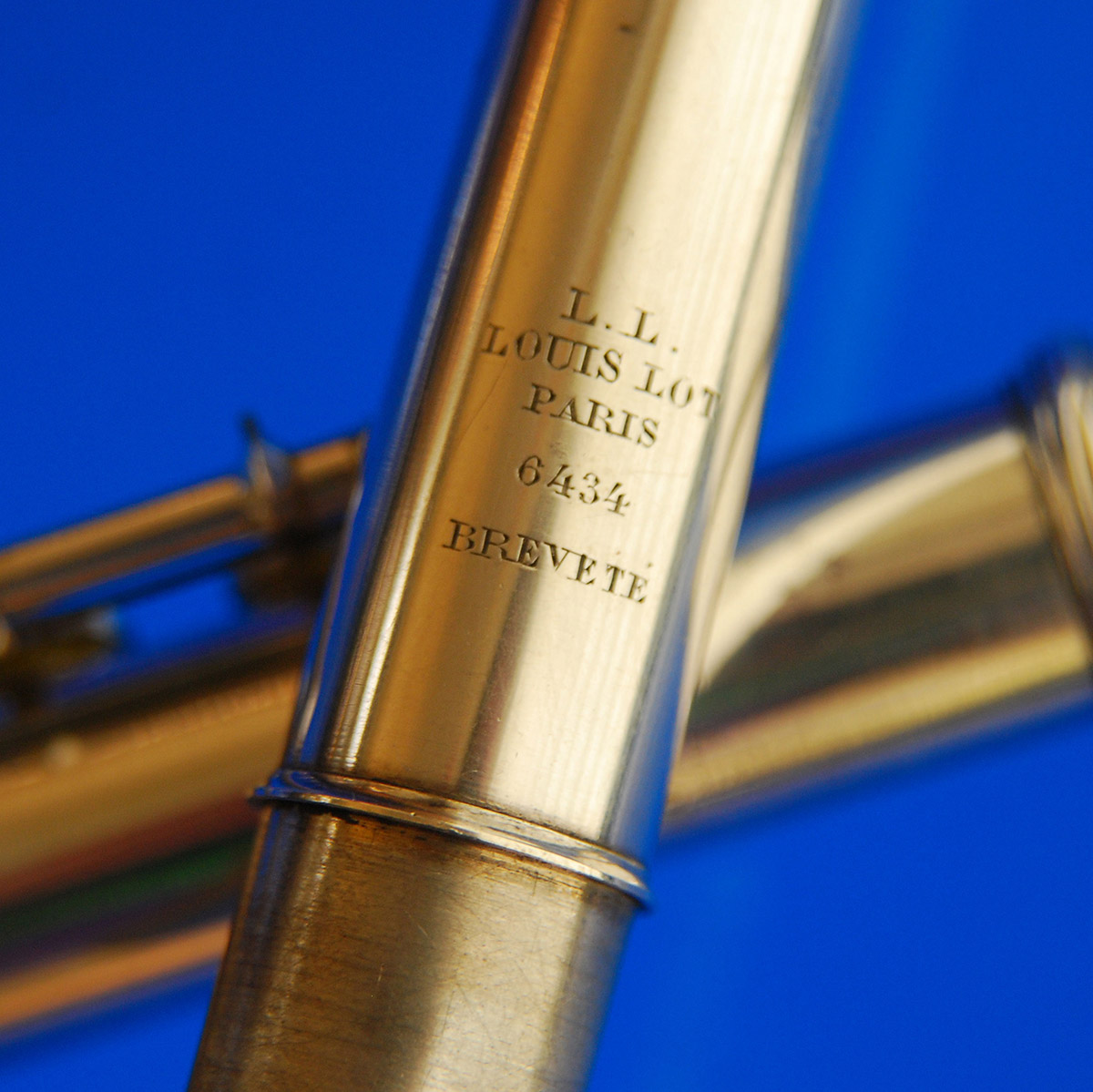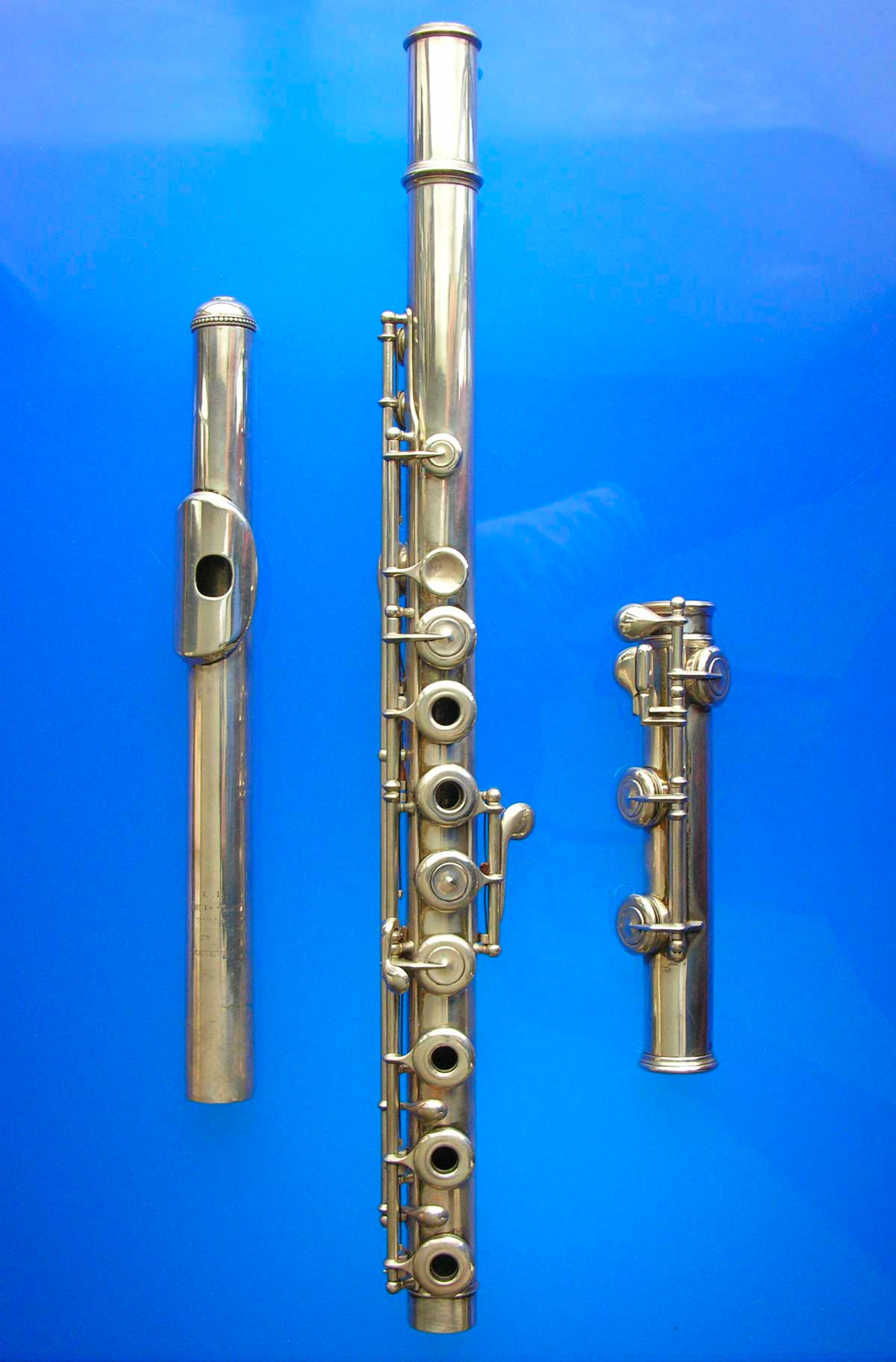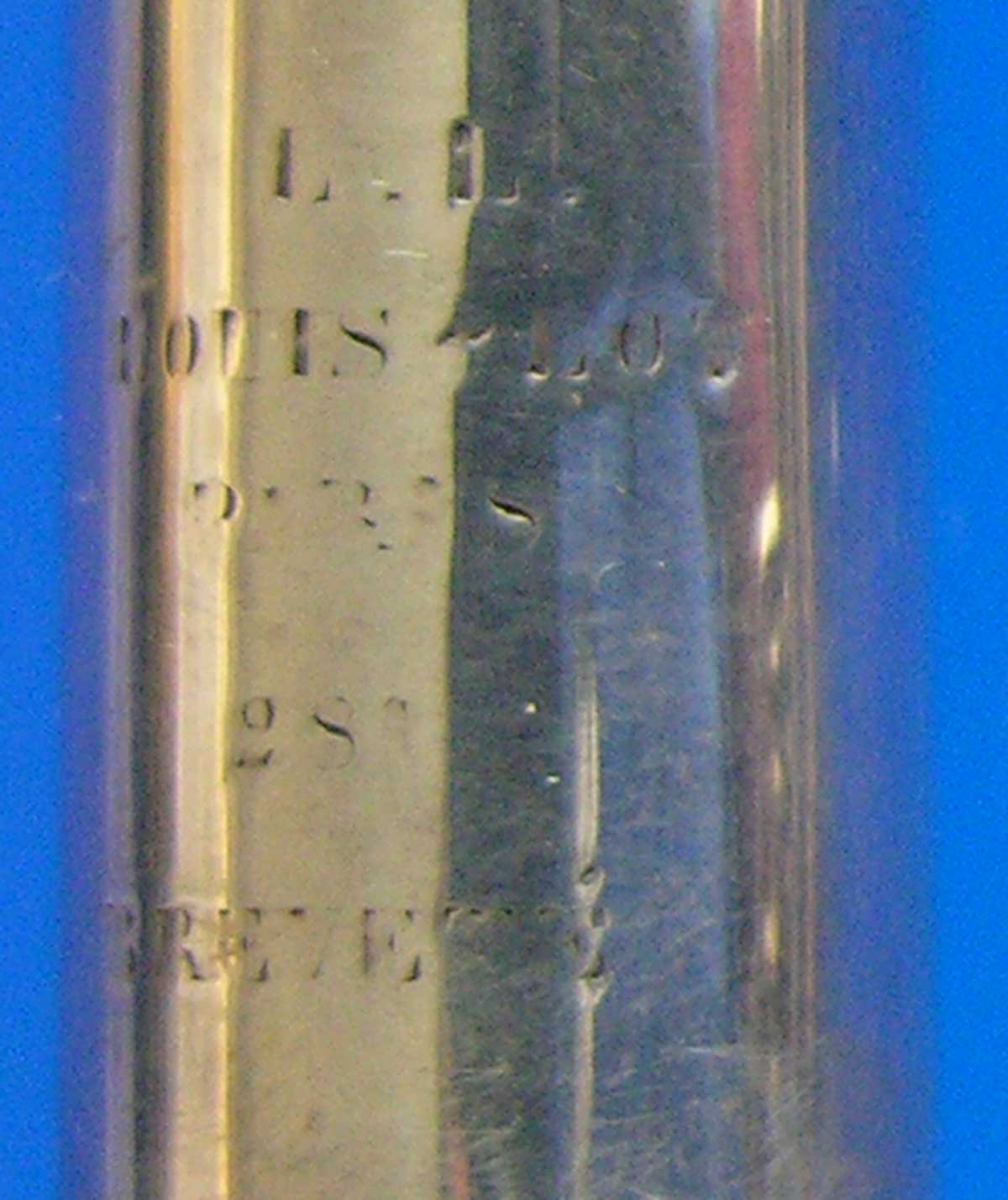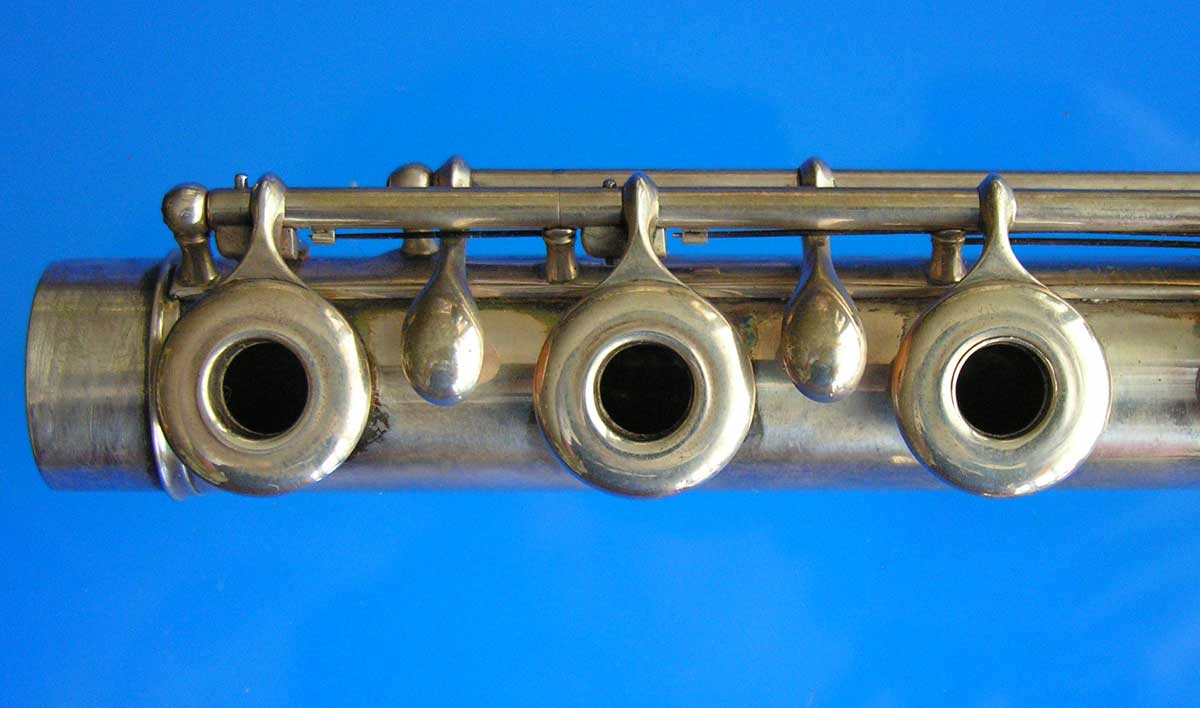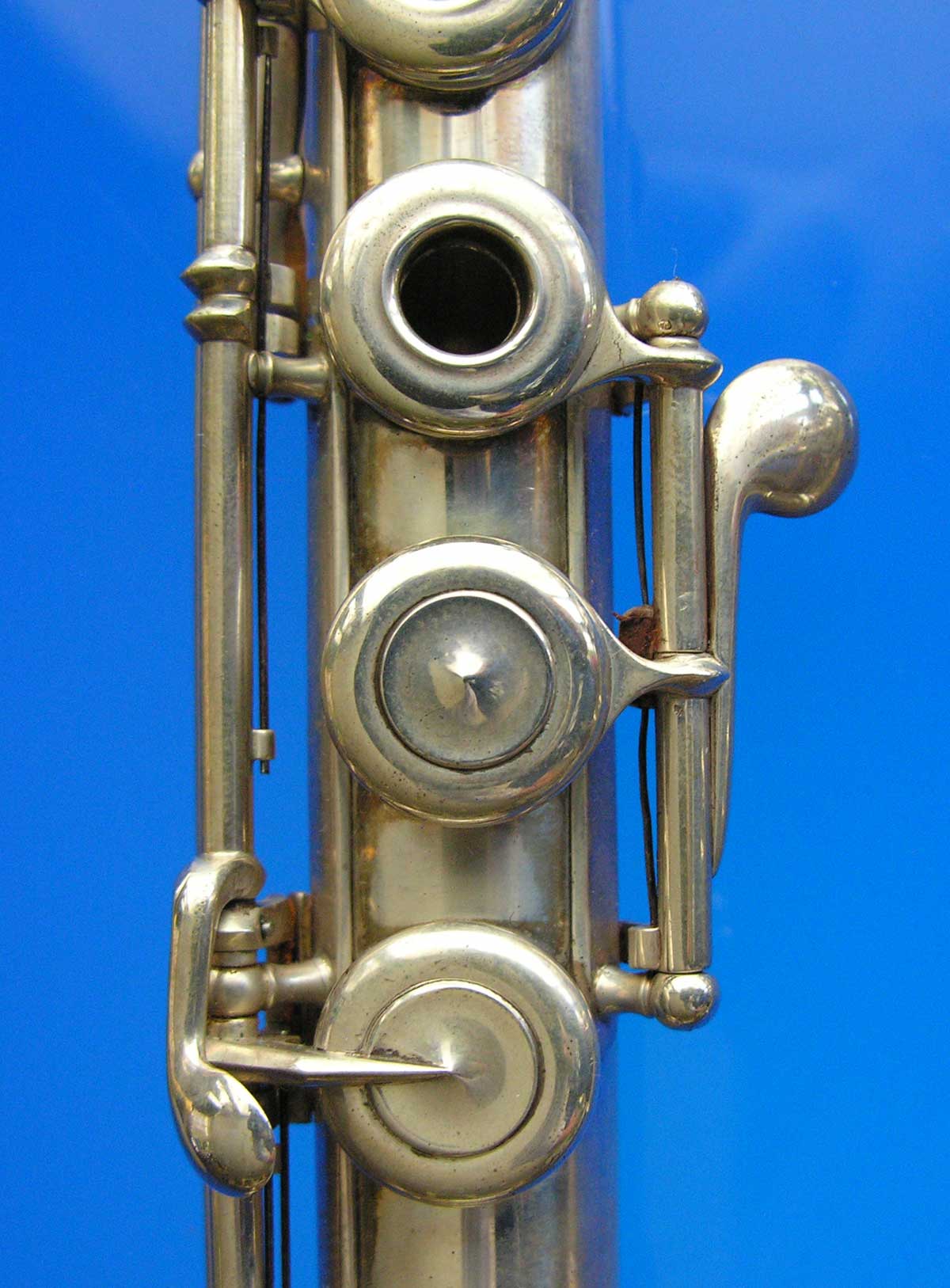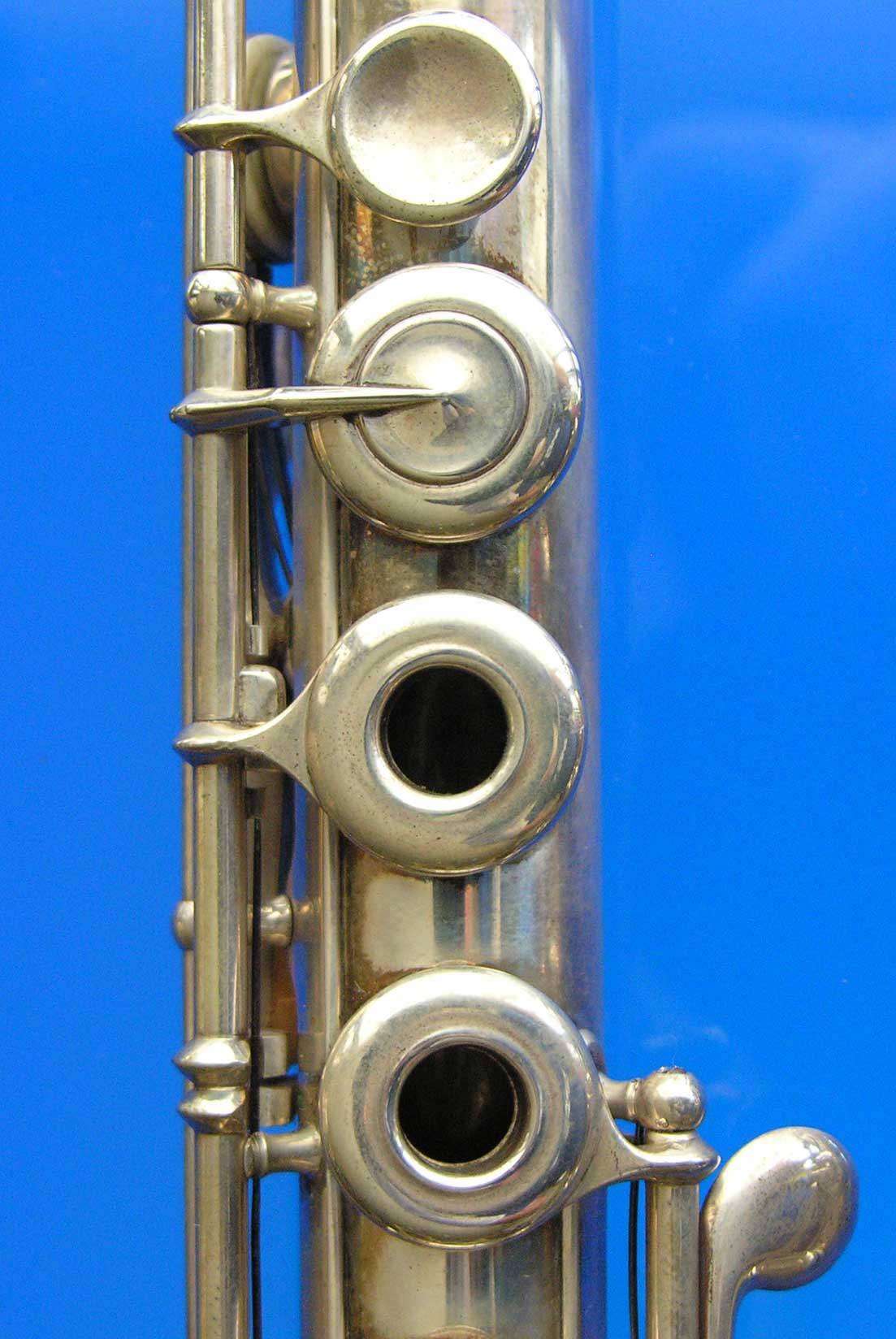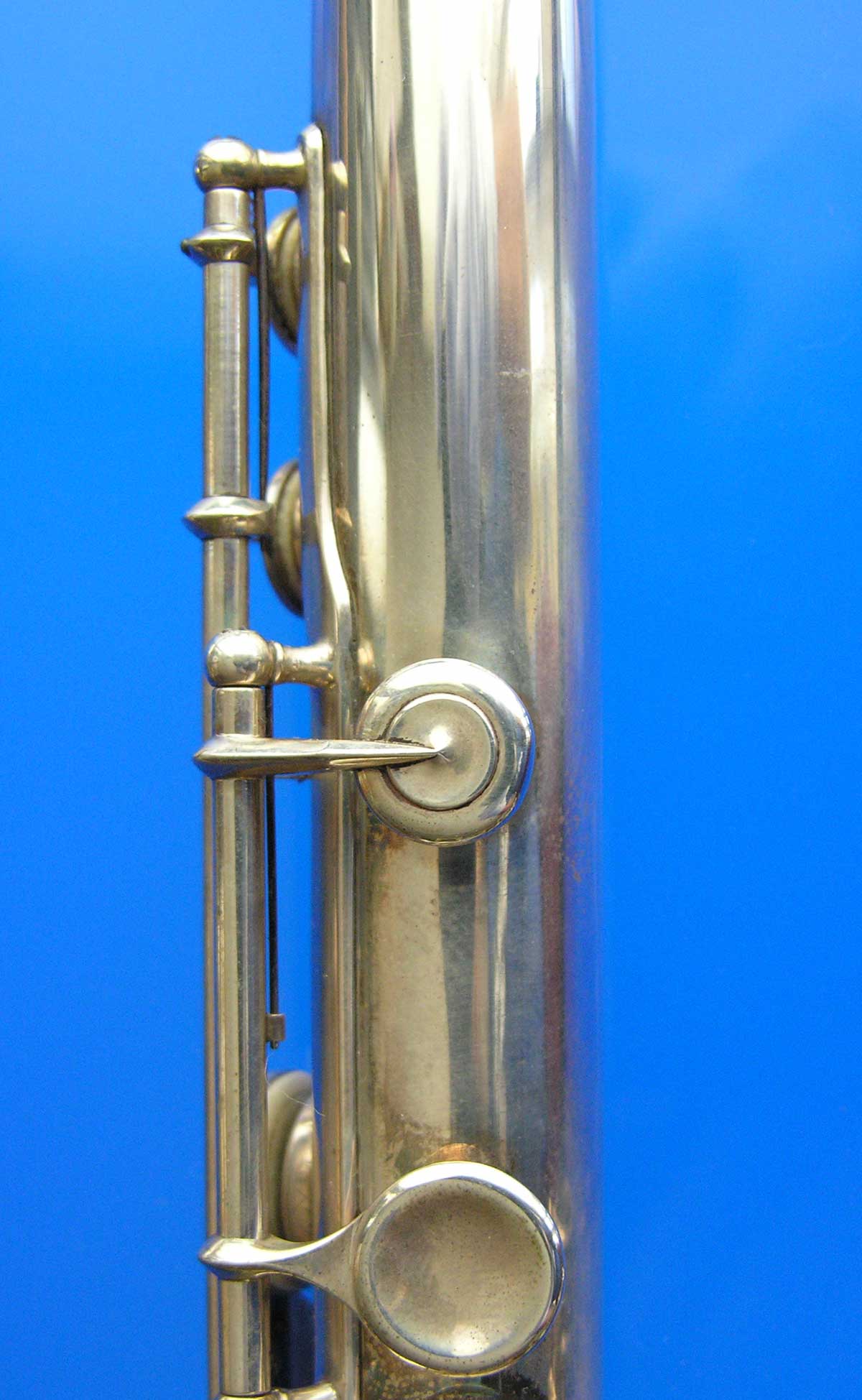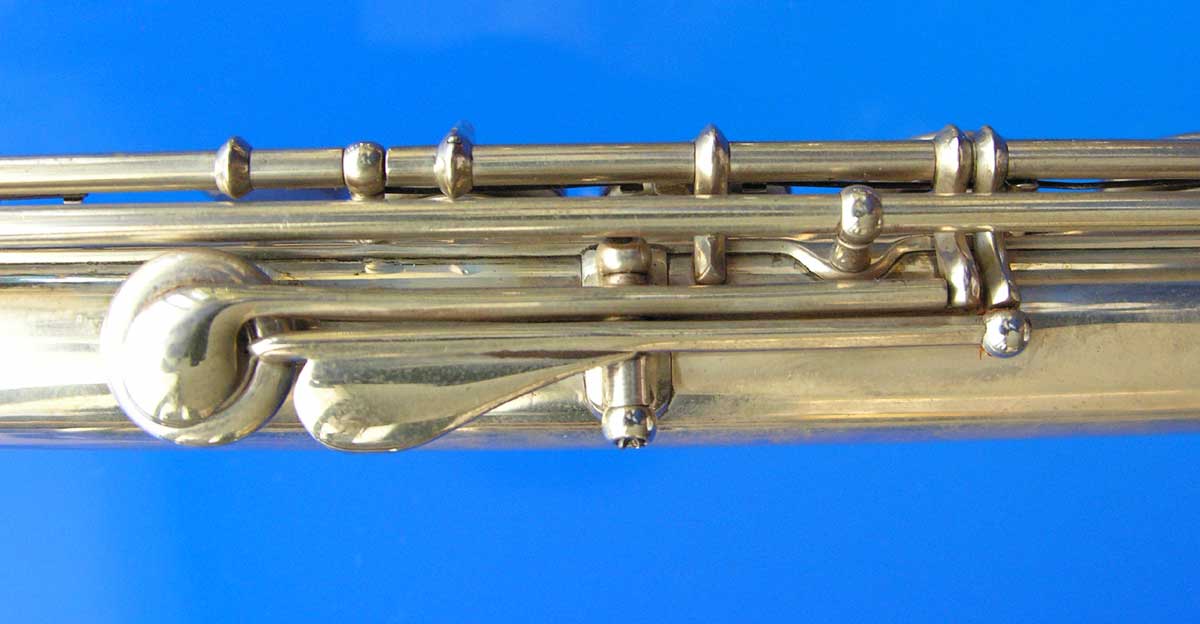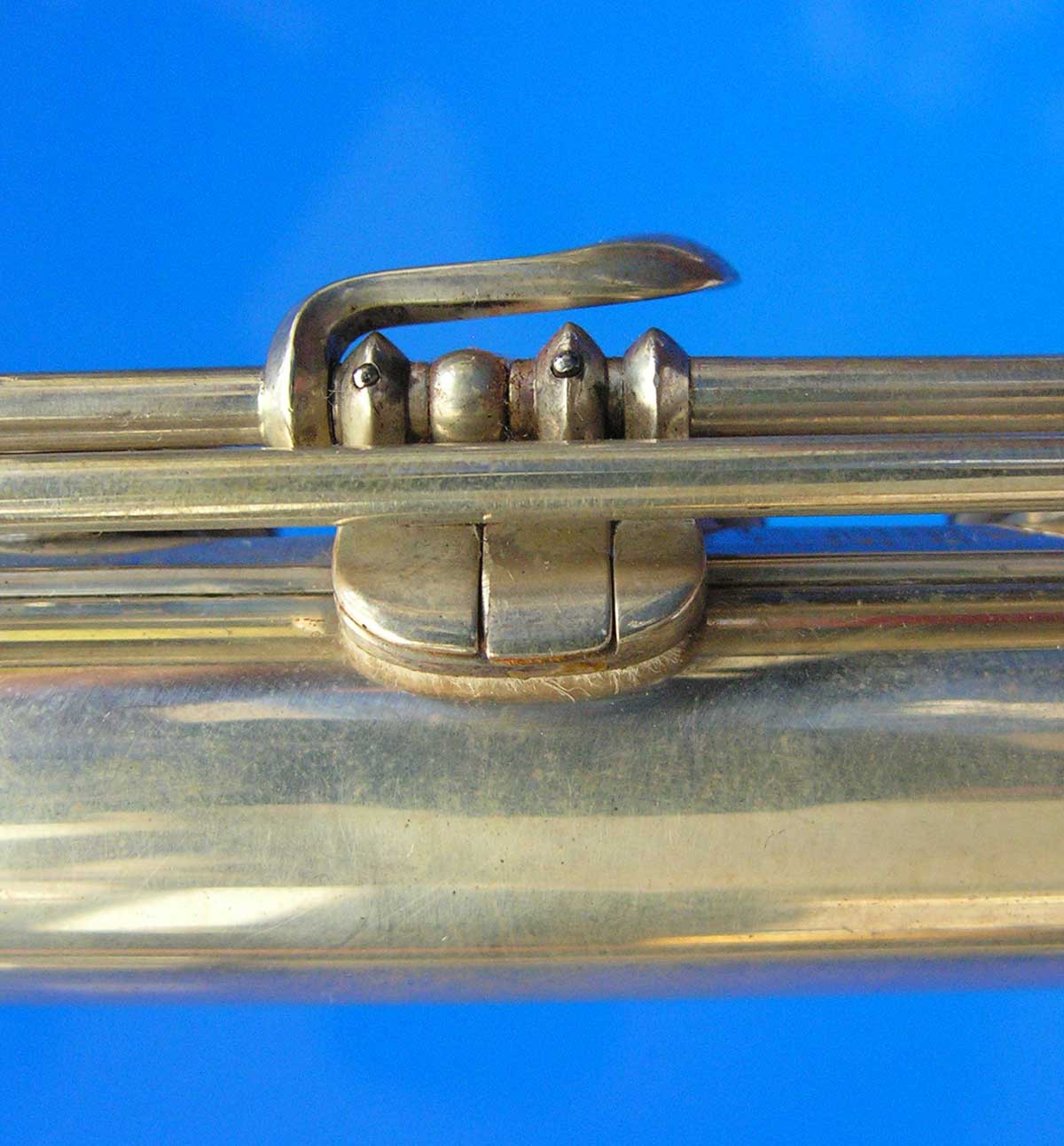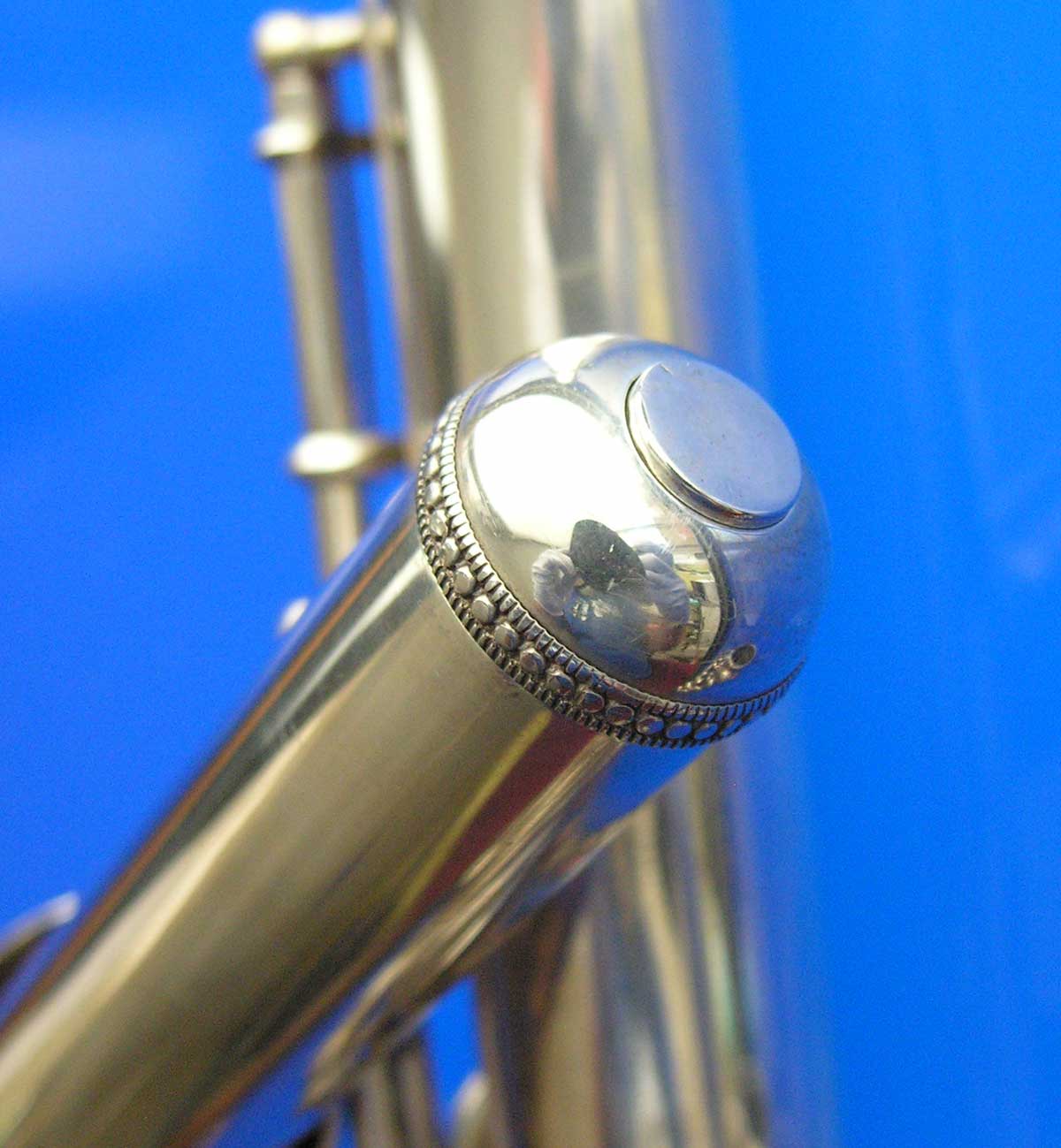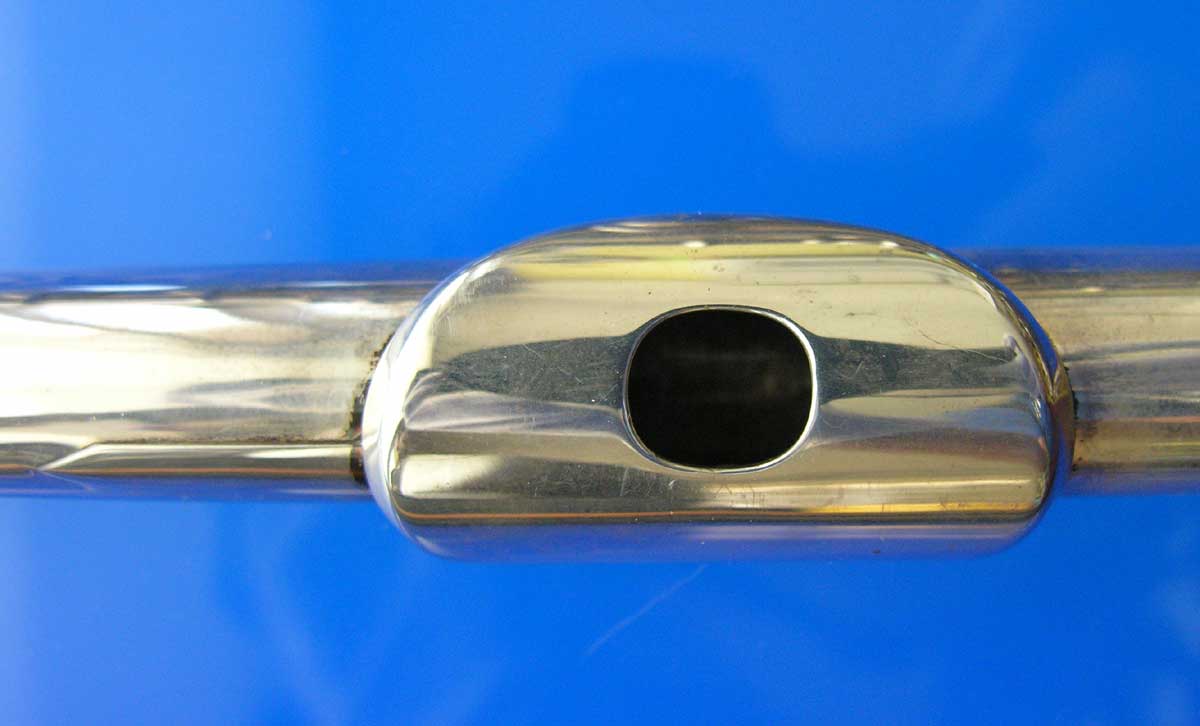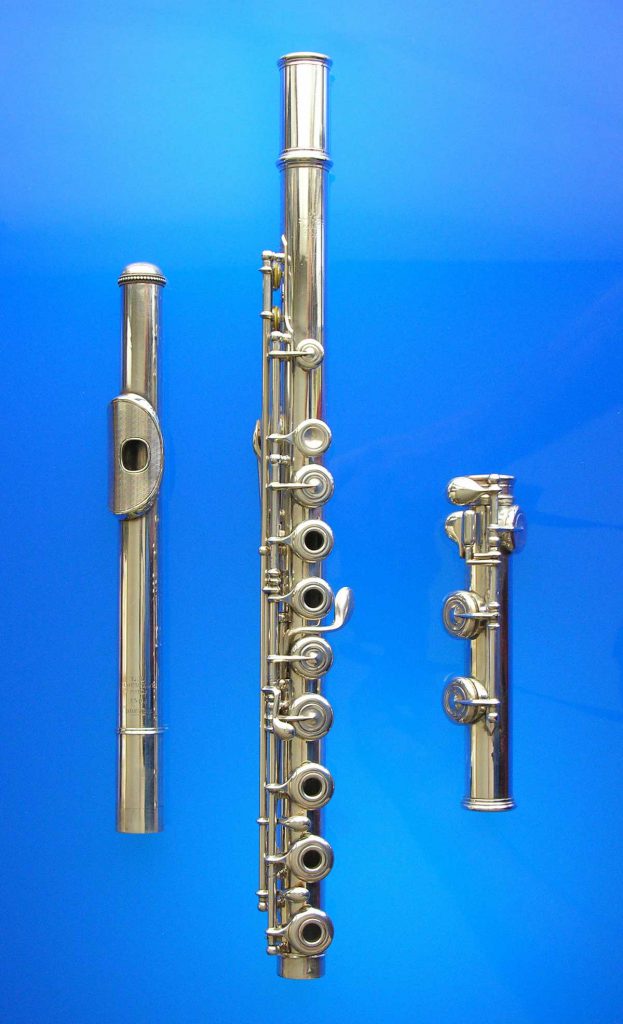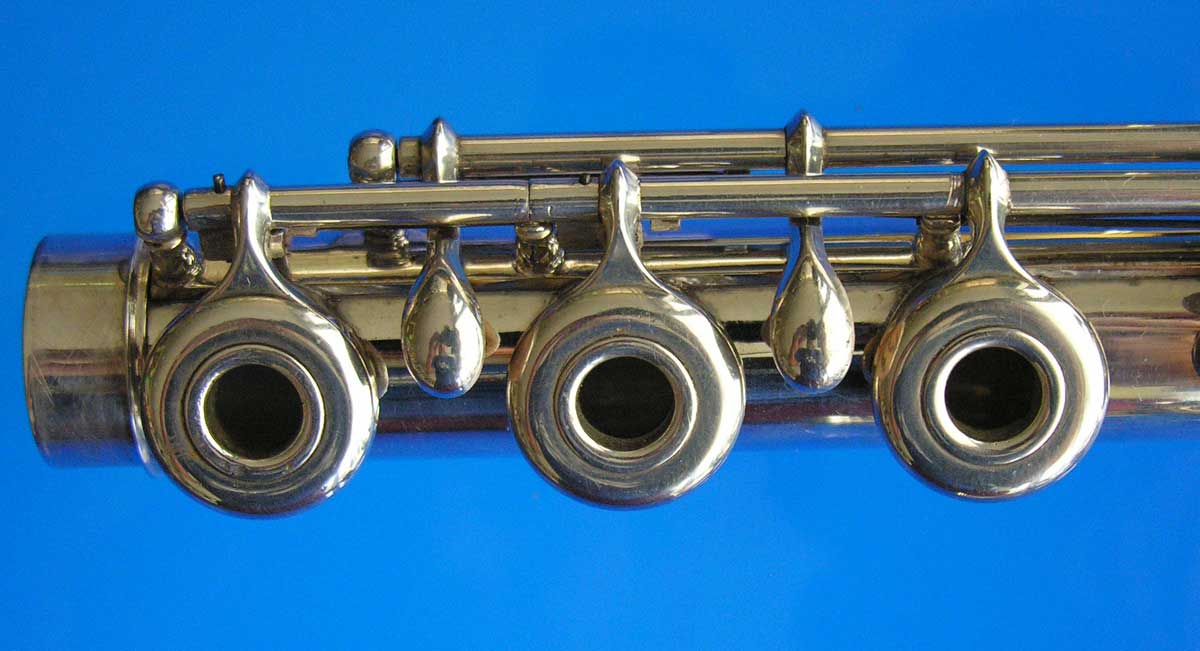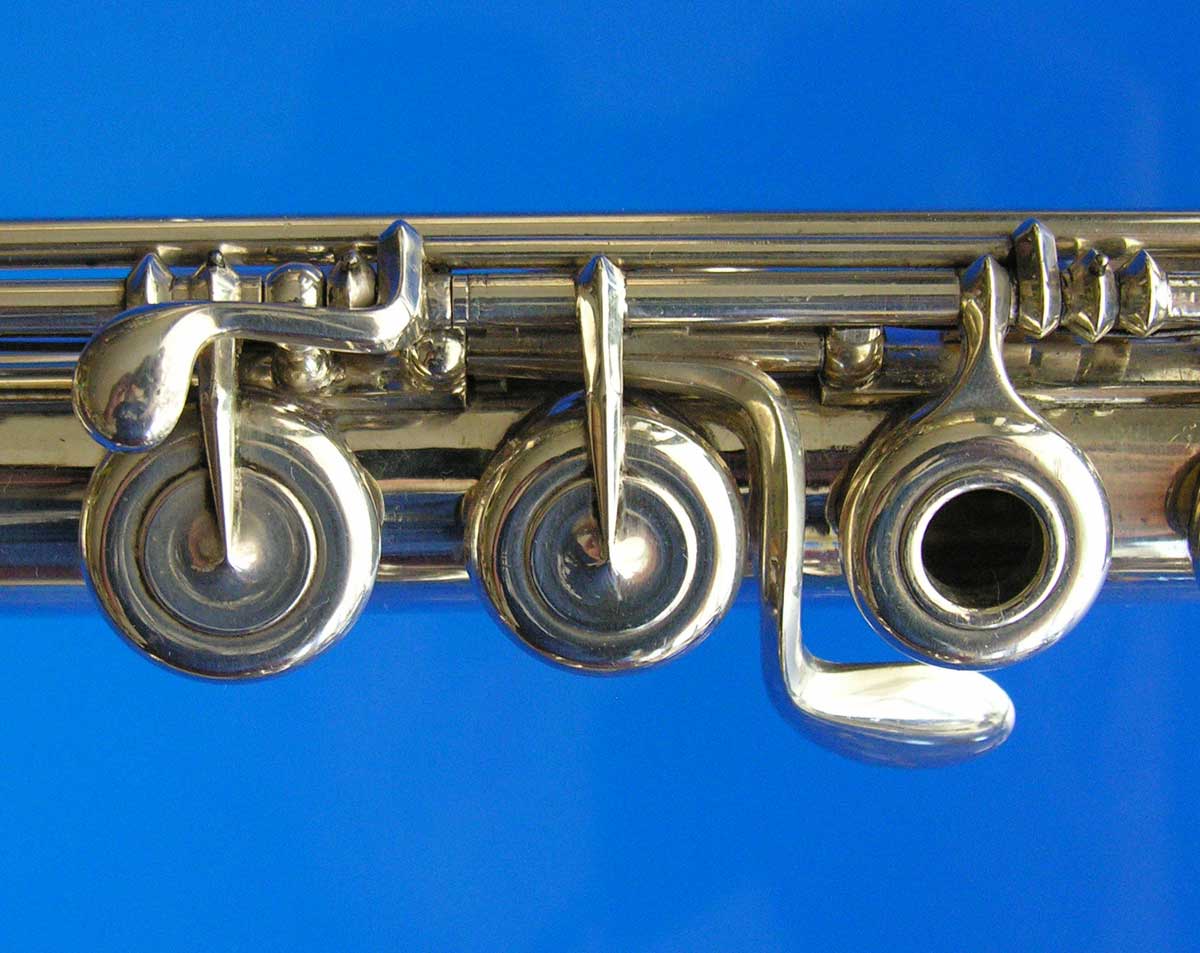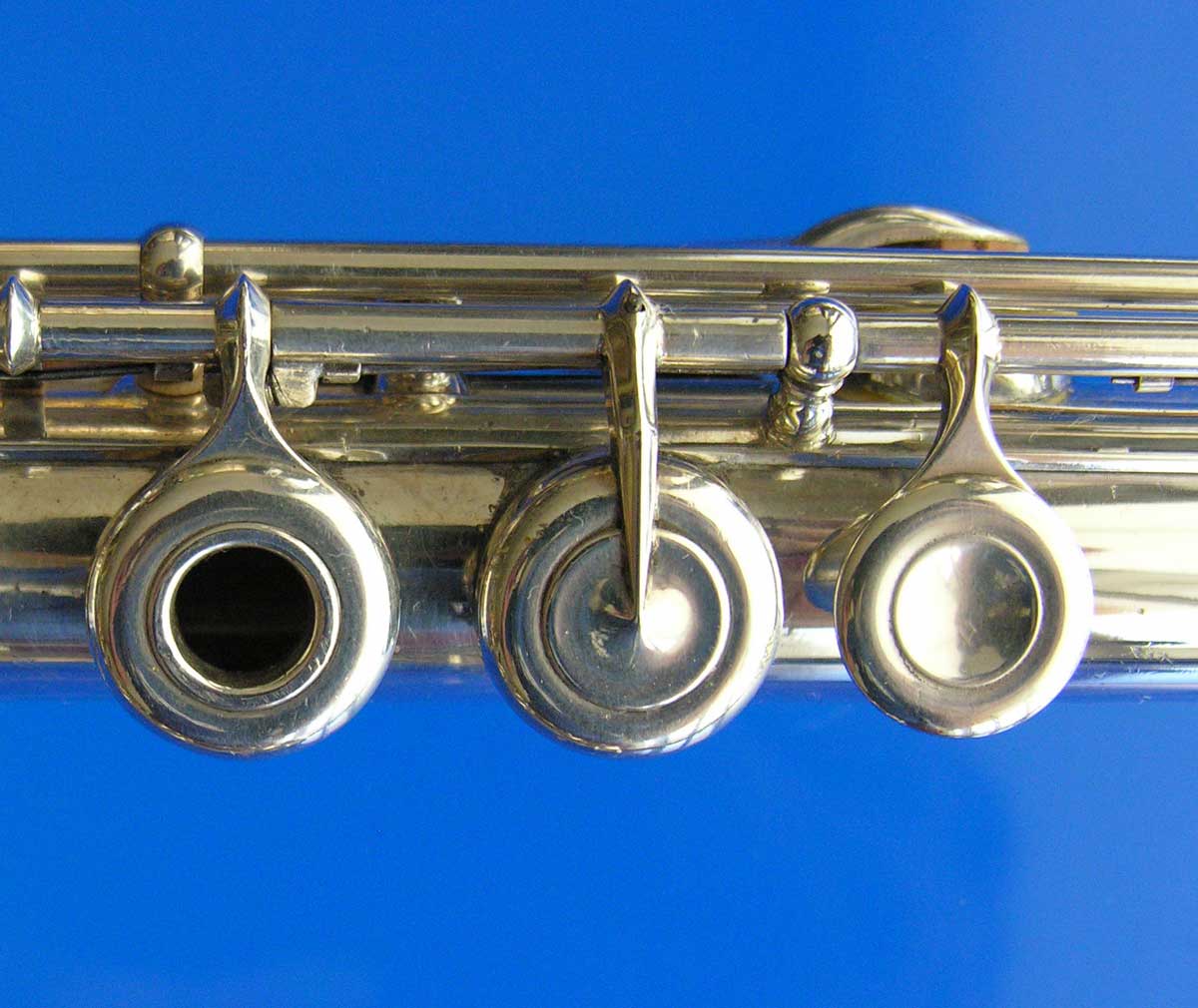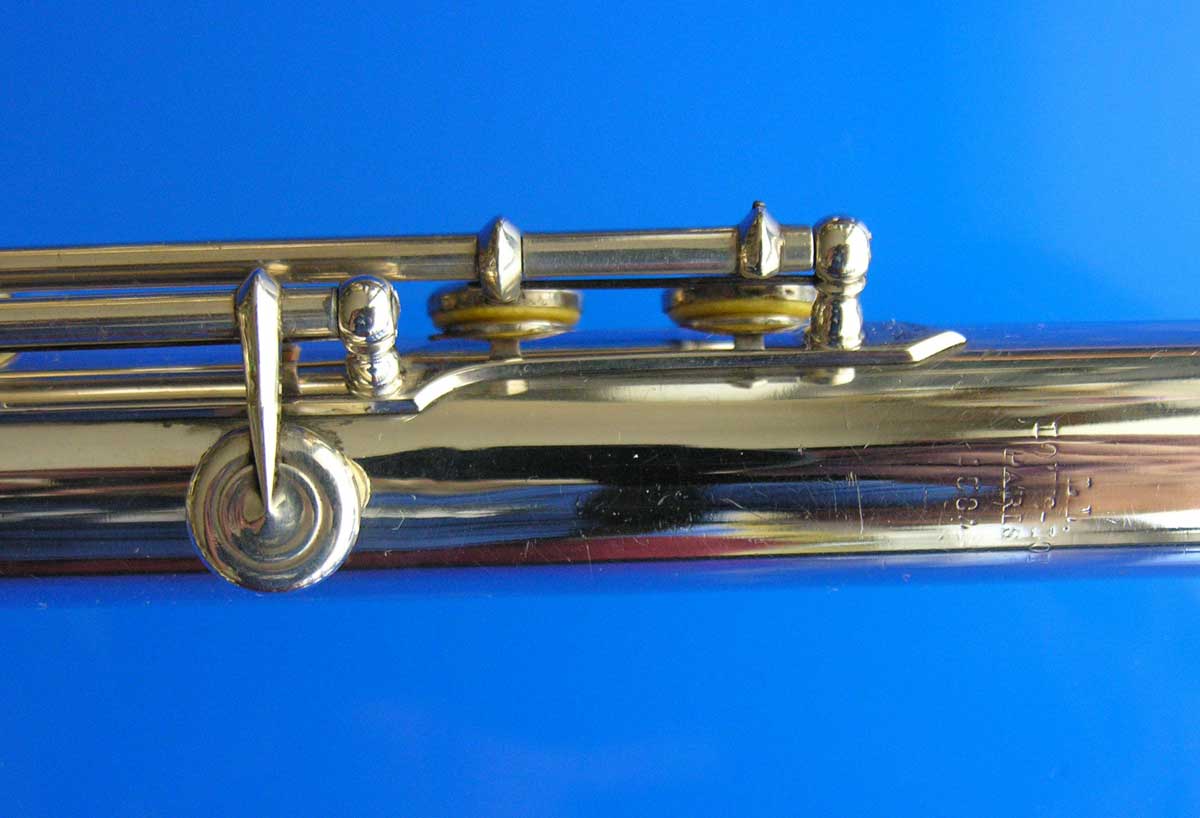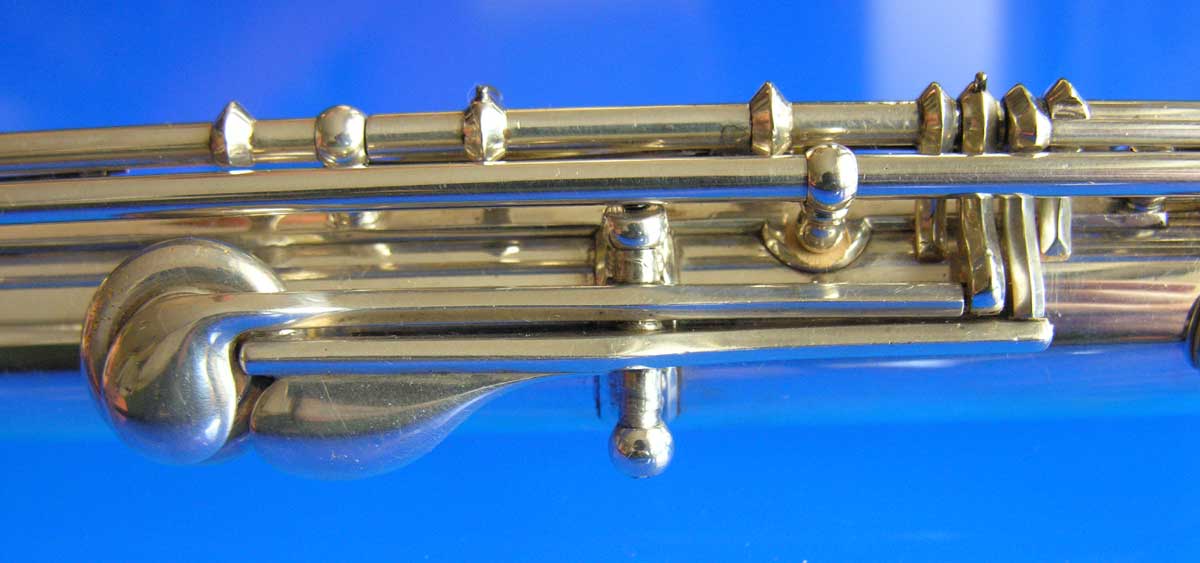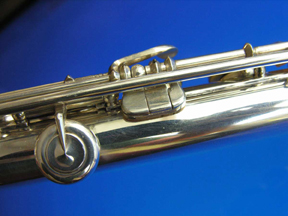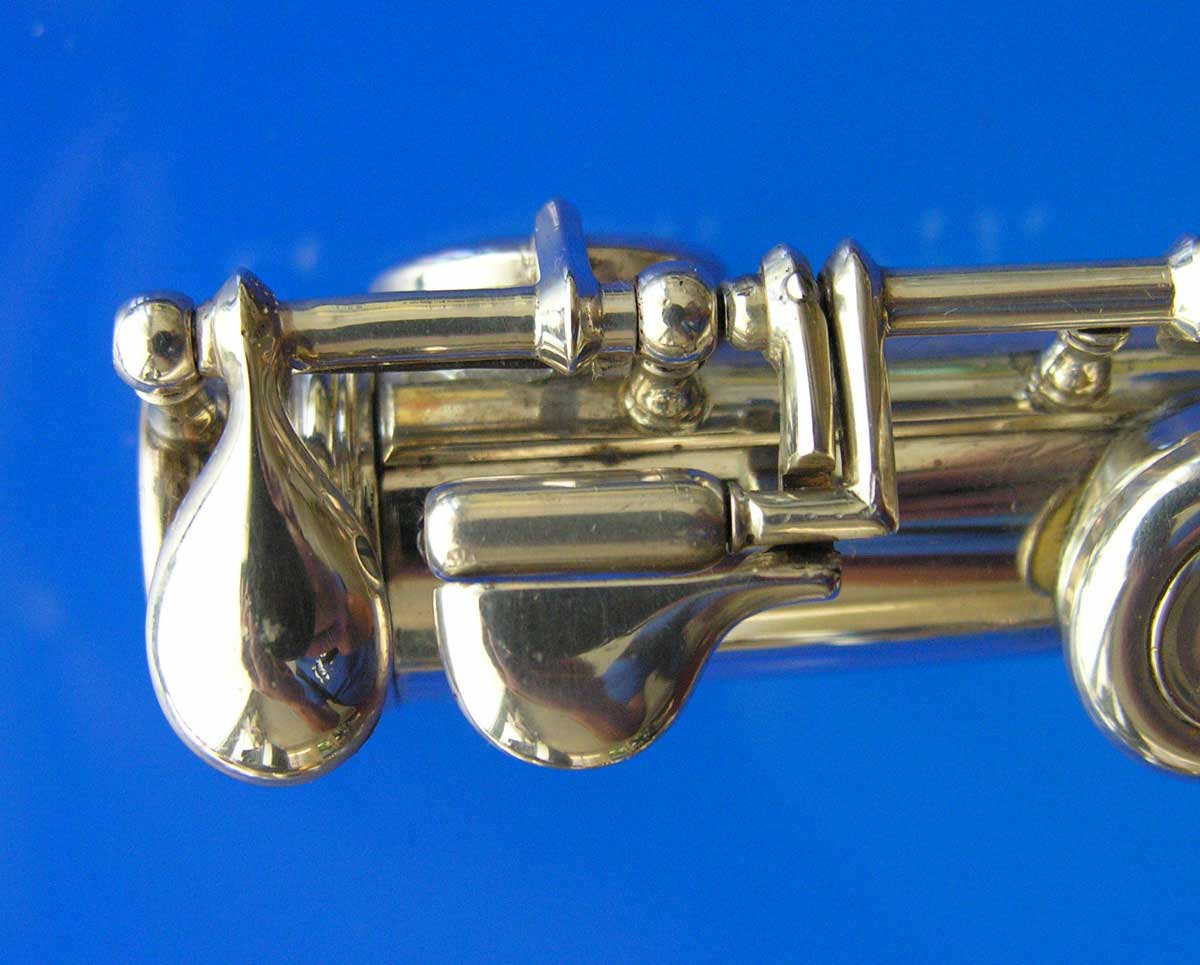Louis Lot #6434
Louis Lot
Paris, France
Stamp: Engraved on head and body: L. L. / LOUIS LOT / PARIS / BREVETÉ. Additionally on head, after Paris: 6434
Comments: This instrument is my favorite of the plated Lot’s that have been known to me. It has a great feel under the fingers, and the very rewarding Louis Lot tone. This flute has has been well loved, well played. Paul Rabinov overhauled it.
Material: This is the model 7, Maillechort flute with silver plating and C foot. Curiously, Maillechort is named after the 1819 inventors, Maillet and Chorier, who mixed copper, nickel and zinc to make a hard, workable, attractive, and cost effective metal. The lip-plate is silver, with hallmarks. The pad washers are all original French metal. The springs are steel, and possibly original. The crown and cork are the metal screw type, and look fresh from the shop inside.
System: This flute is built in the final system of Villette, which remains largely unaltered to this day. It has a C foot, side G#, and Bb trill. There are no adjusting screws. The right hand uses the hanging T, and the footjoint is pinless. The scale seems to be the classic A=435-438 French scale, yet the headjoint is untrimmed and the flute plays at A=440 really well. The sounding length is just a whisker over 600 mm; the A=435 flutes were built at 605mm. Thus this appears to be one of the rare Louis Lot flutes intended to play at A=440.
Condition: This flute is a very fine example of the flutes made during Taffanel’s professorship at the Conservatoire. This is the flute his students would receive for first prize at the Conservatoire. The tone is classic Louis Lot, yet the instrument shares a bit of the volume and texture of the 20th century flutes to come. It has been well used, such that the mechanism has had to be swedged, yet entirely unabused. Nothing has been changed from the day of delivery, except the pads and some adjustments to take out key movement. This is a very lovely player, in near perfect condition.
Pitch: Pitched at A=440, apparently originally.
Sounding Length: Sounding length 600 mm
Measurements: Embouchure 11.9 x 10.0. Riser 4.22mm/ 4.39mm. Tube thickness .014″
Weight: 384 g.
Case: In possibly the original case, which is in poor condition.
This flute is in excellent original condition, and is a lovely player. It was one of the few Lots originally made to play at A=440.
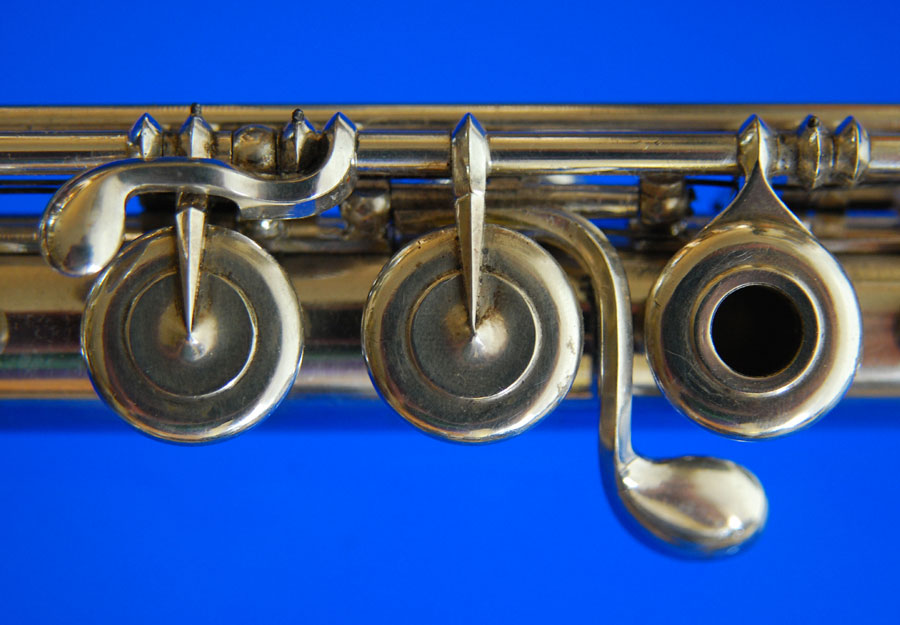
The clear and precise lines of Barat show that he was more stable than the talented yet yet occasionally wayward Debonneetbeau. Indeed, Barat brought the firm back into favor after earlier issues with Altés. The trill key is to Bb, unlike the previous B trill of Lot.
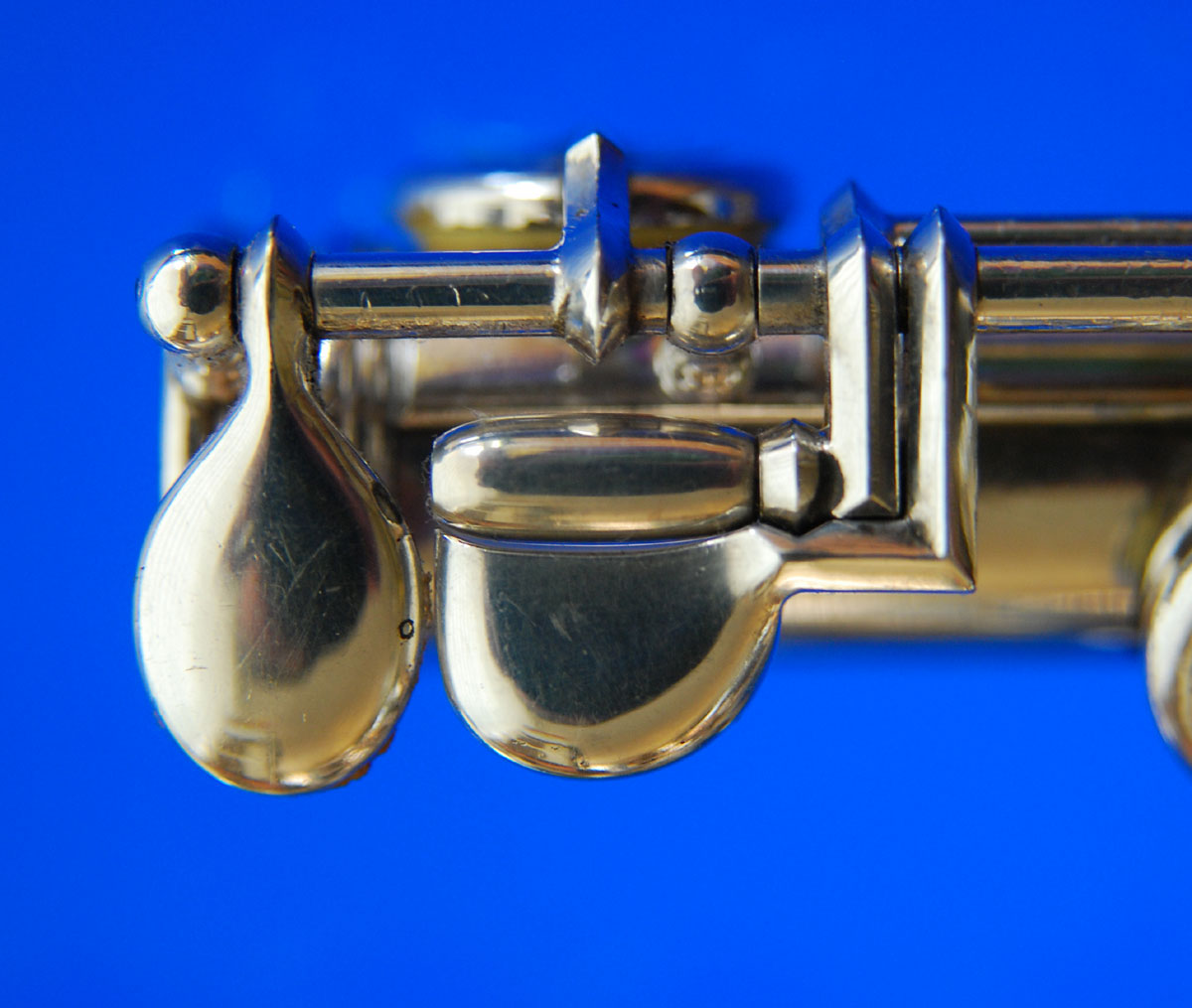
Barat’s footjoint touches show a bit more curve on top of the teardrop D# key than his predecessor’s, and a new beveled design just to the right of the C# roller.
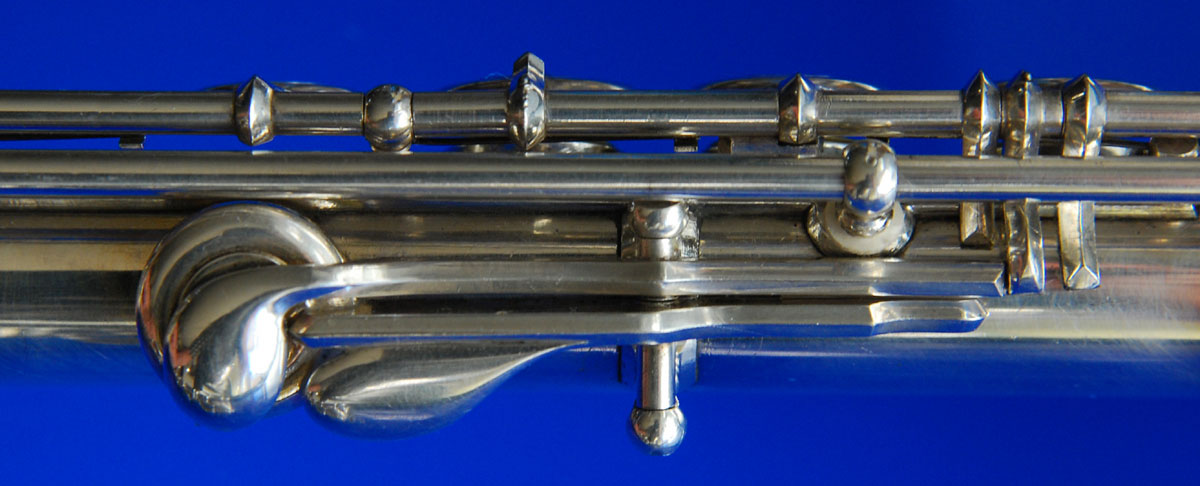
No plating is missing from the thumb key, showing that this flute was carefully used, and not to excess. The thumb key tail has an elegant curve, possible since the trill is now to Bb.

The underside of the footjoint keys shows the original French pad washers, and the very fine finishing work of Barat.
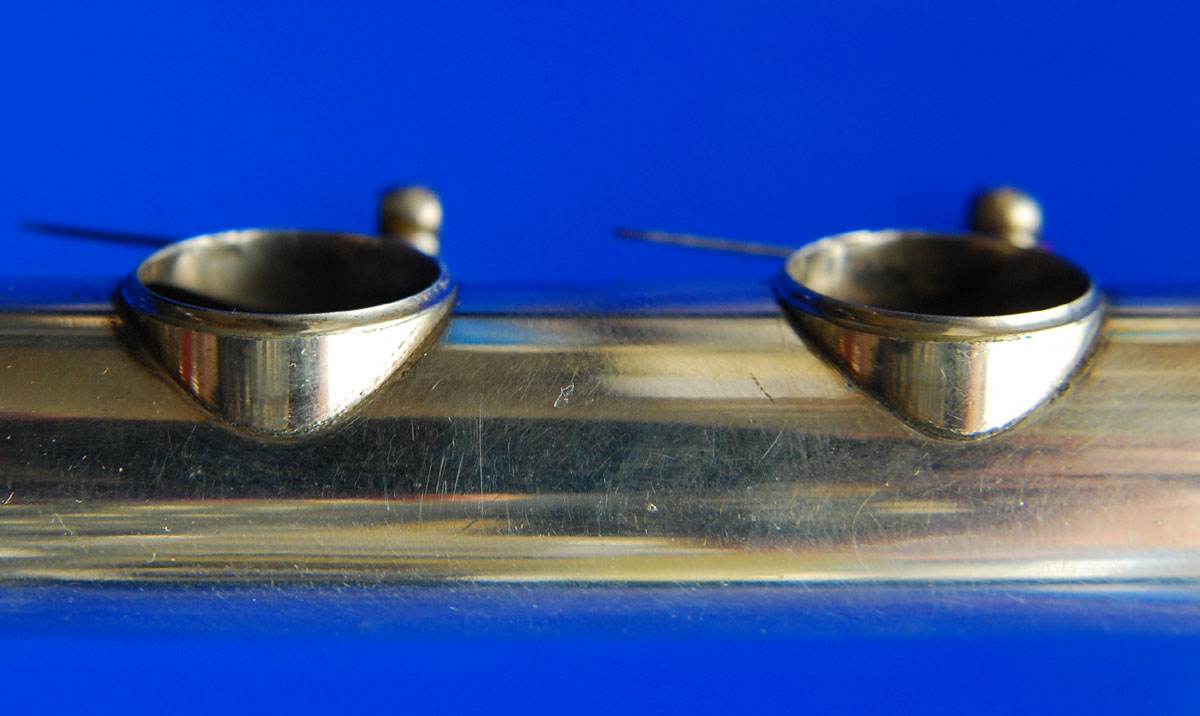
These are the classic Louis Lot tone holes. The rims are cut with a curve to the thinned top edge. Barat actually also offered toneholes with straight tapered rims. The solder seam is visible where the toneholes meet the tube.
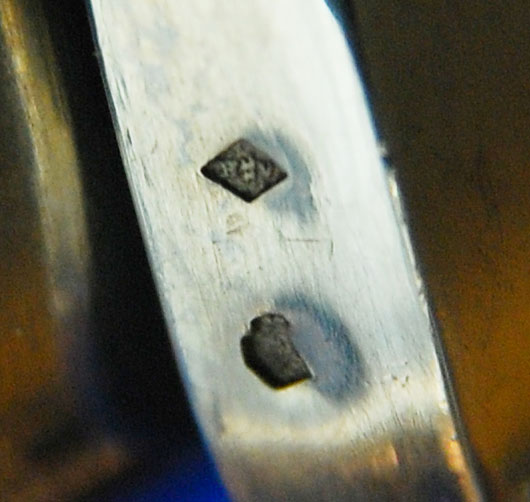
Although the body and keys are plated, the lipplate is of silver. Here we see the hallmarks used by the firm at this time. The diamond shape has inside, as registered by H. Villette c. 1877. The other stamp is a boar’s head, indicating silver of Paris manufacture.
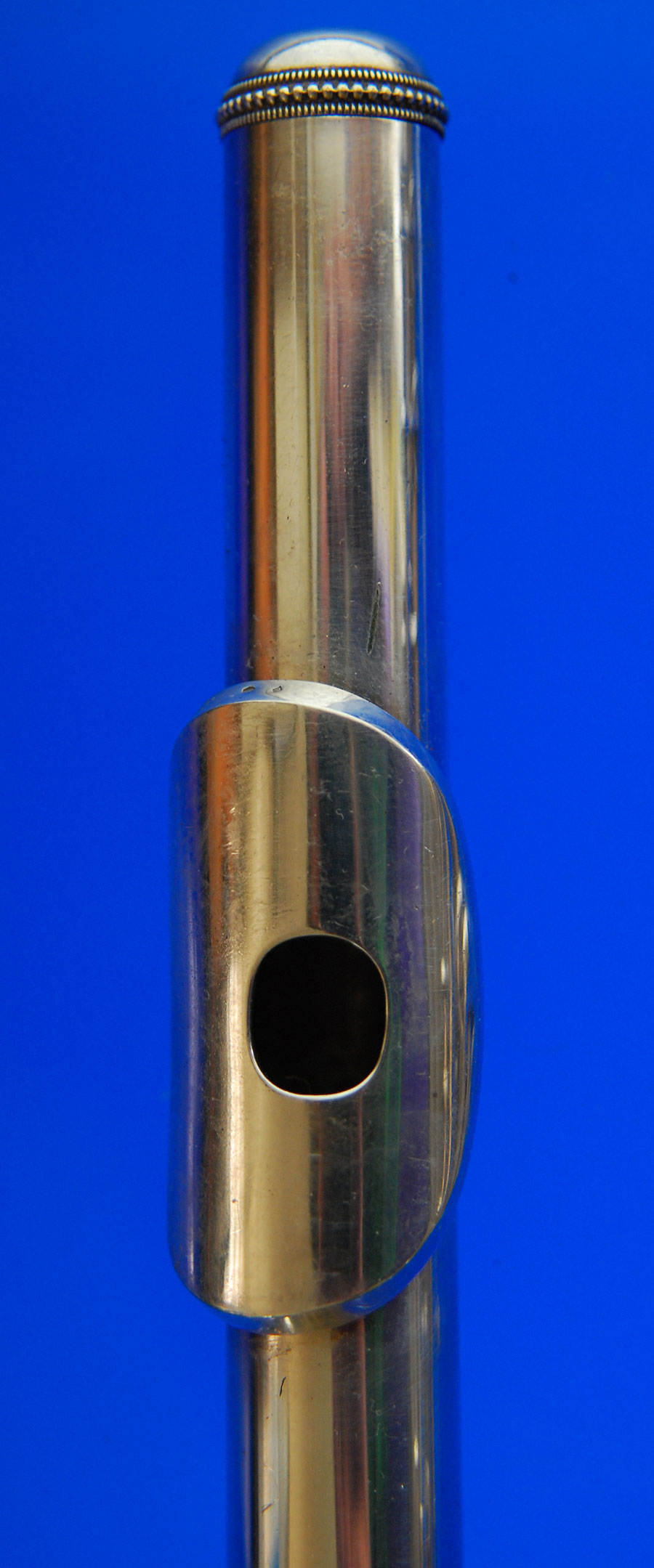
The beautiful lipplate and crown are completely original, with very little wear. Inside the headjoint under the crown looks brand new. The embouchure measures 11.9 x 10.0 mm.
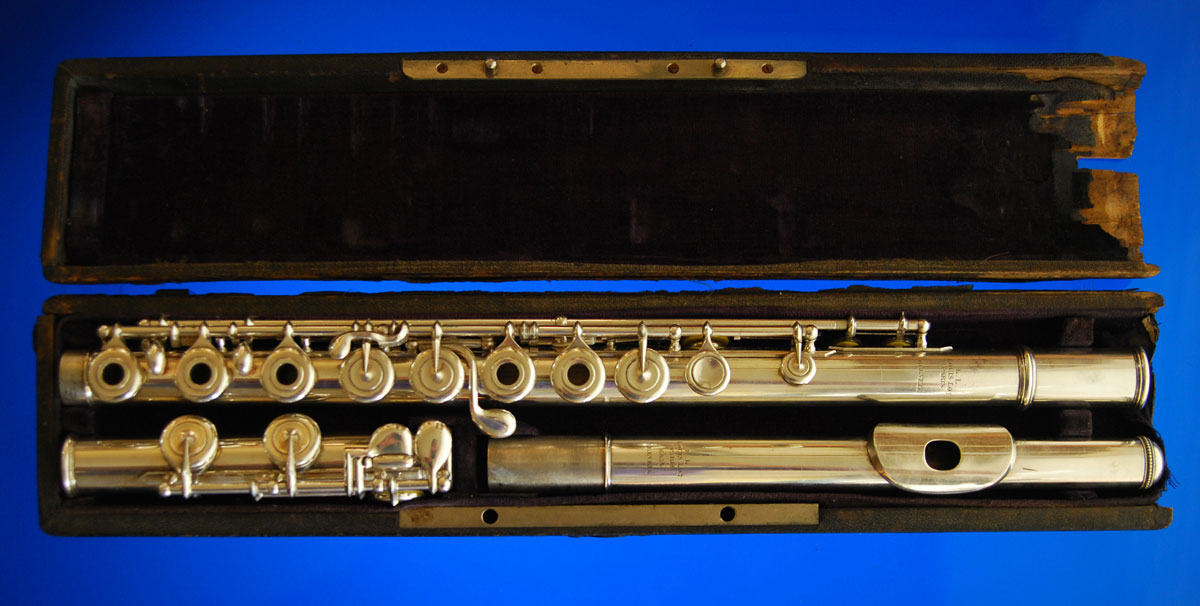
Although the case is damaged and missing one end, the flute has miraculously survived without any harm. We cannot guarantee that they were together when the accident happened!
